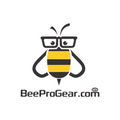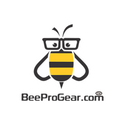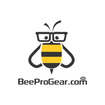Whether you're a novice beekeeper or a seasoned pro, having the right tools is essential for the health and productivity of your hive. In this guide, we'll explore the must-have hive tools that every beekeeper should have in their arsenal. From basic essentials to specialized equipment, we'll cover everything you need to keep your bees happy and your honey flowing.
1. Hives
Hives serve as the bees’ homes. There are various types of hives to choose from, such as Langstroth hives or Top Bar Hives. Langstroth hives are commonly used due to their modular design, making them easy to stack and manage. However, feel free to explore other options based on your preferences. You can even build your own DIY beehive using readily available plans and materials.
2. Frames
Frames are like filing cabinets inside the hive. Bees build their comb on these frames, where they store honey, lay brood (bee larvae), and carry out their daily activities. When selecting frames, consider whether you want them with or without plastic foundation. Using foundation reduces the bees’ work, allowing them to focus more on honey production. Make sure to inspect frames regularly for signs of disease or damage.
3. Smoker
A smoker is a must-have tool for any beekeeper. When you open the hive, puffing smoke inside helps calm the bees. They interpret the smoke as a sign of a nearby forest fire and gorge on honey, making them less likely to sting you. A well-functioning smoker ensures a smoother inspection process. Look for a smoker with good airflow control and a heat shield to protect your hands.
4. Hive Tool
The hive tool is like a beekeeper’s Swiss Army knife. It’s an inexpensive yet essential tool that serves multiple purposes:
-
Prying Frames: Bees seal their hives with propolis (a sticky substance), making it challenging to separate frames or hive bodies. The hive tool helps you gently pry open frames without damaging them.
-
Cutting Beeswax: Sometimes, beeswax bridges gaps between frames. Use the hive tool to cut through the wax and access the honey-filled cells.
-
Scraping Residue: Remove excess propolis, wax, or other debris from hive components using the flat end of the tool.
5. Queen Catcher
When you need to keep the queen bee separate temporarily (during hive inspections or swarm catching), a queen catcher comes in handy. It prevents her from escaping while you work with the rest of the colony. Queen catchers usually have a mesh or cage design, allowing worker bees to interact with her while keeping her contained.
6. Bee Suit
Protect yourself with a good-quality bee suit. While you can start with a budget-friendly suit, investing in a higher-quality, ventilated suit provides better protection. A full bee suit includes:
-
Jacket or Coveralls: These cover your upper body and arms.
-
Veil: A mesh veil protects your face and neck from bee stings.
-
Gloves: Opt for gloves that allow dexterity while shielding your hands.
-
Pants or Overalls: Ensure they are well-fitting and cover your legs completely.
Remember, a sting-free beekeeping experience is a happy one! 🐝
Conclusion
With these important tools ready to go, you'll be fully prepared to start your beekeeping adventure. You'll have everything you need to take care of your bees, keep them healthy, and enjoy the delicious honey they produce. So, get ready to put on your bee suit, fire up the smoker, and dive into the world of beekeeping with confidence!



